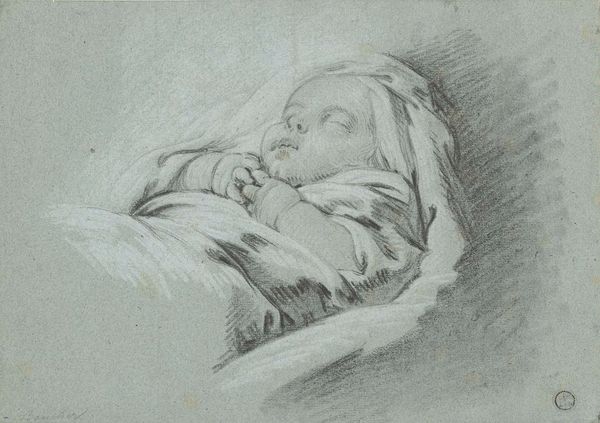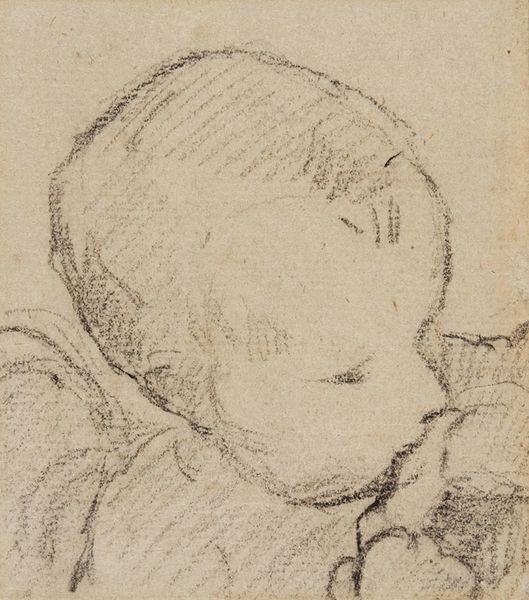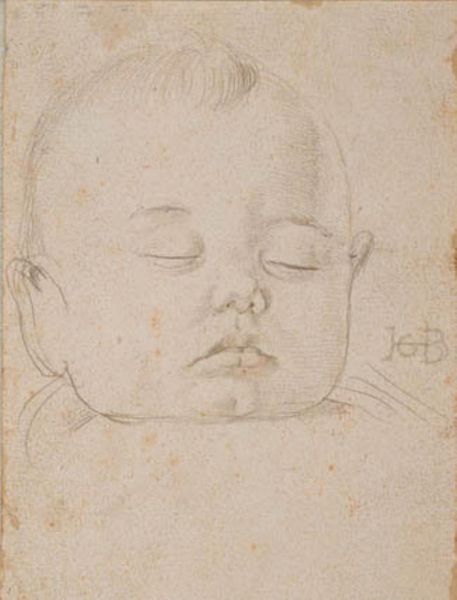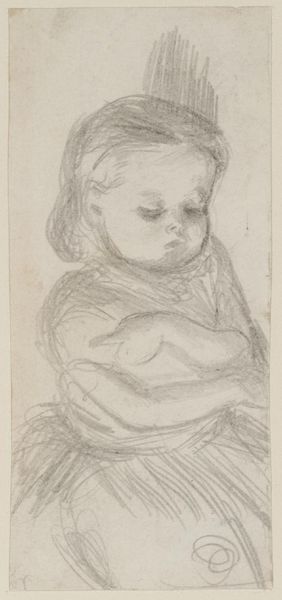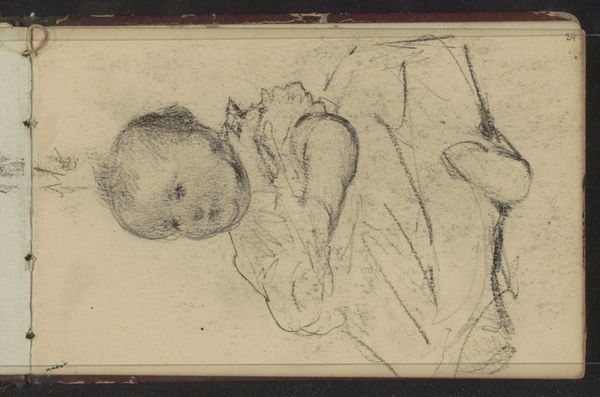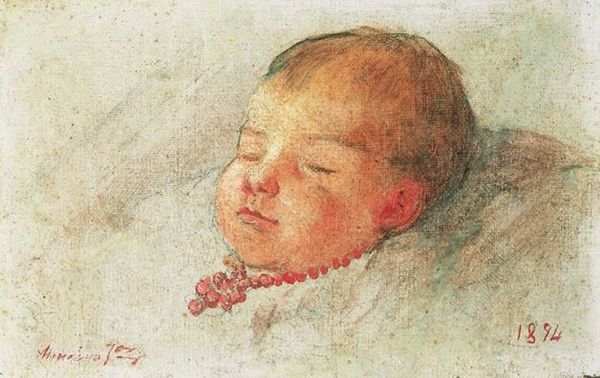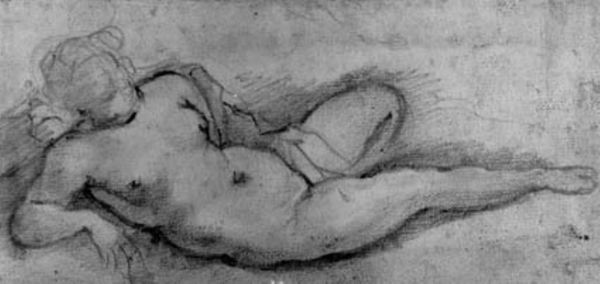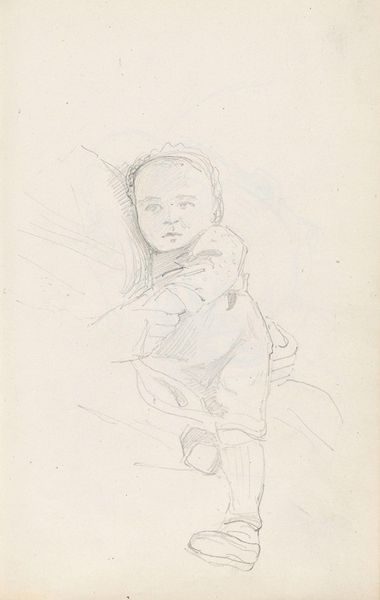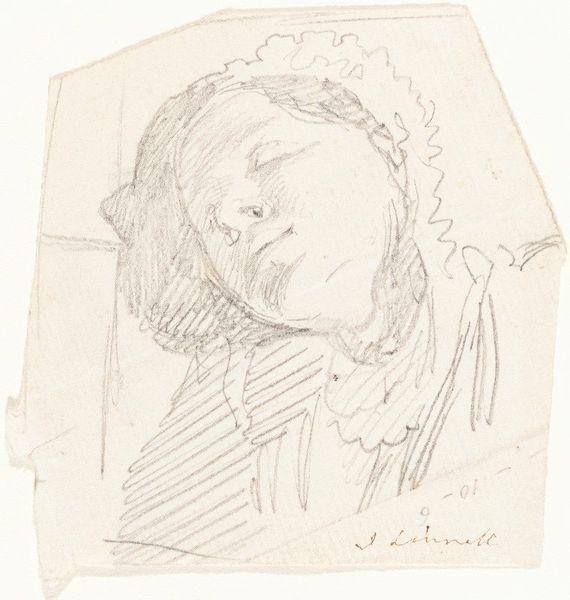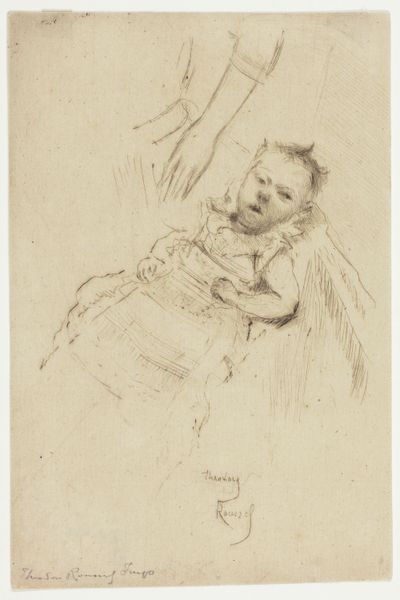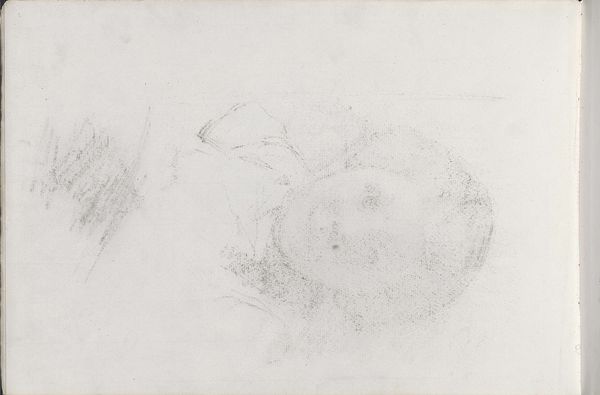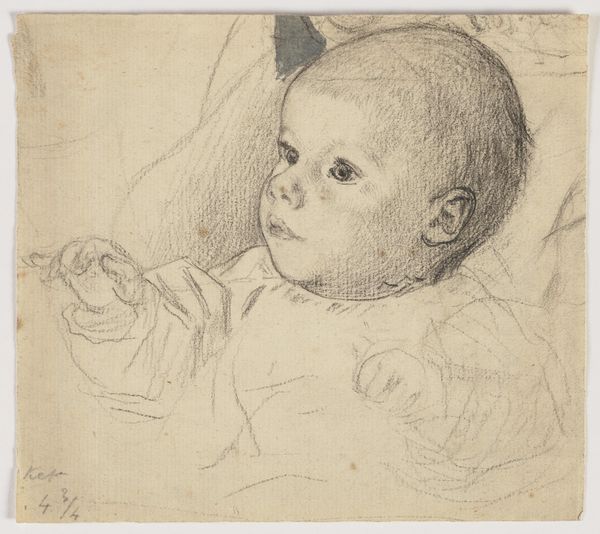
Jack Millet as a Baby 1888
0:00
0:00
johnsingersargent
Fitzwilliam Museum (University of Cambridge), Cambridge, UK
#
portrait
#
amateur sketch
#
quirky sketch
#
head
#
pencil sketch
#
incomplete sketchy
#
personal sketchbook
#
famous-people
#
idea generation sketch
#
child
#
sketchwork
#
detailed observational sketch
#
sketch
#
rough sketch
#
nose
#
forehead
#
initial sketch
Dimensions: 14 x 23.5 cm
Copyright: Public domain
Curator: This is "Jack Millet as a Baby," a pencil sketch created in 1888 by John Singer Sargent. It’s currently housed in the Fitzwilliam Museum at the University of Cambridge. Editor: There's a sweetness and fragility to it. It feels incredibly personal, almost like a stolen moment captured on paper. The simplicity amplifies its intimacy. Curator: Indeed. Notice how Sargent uses economical lines to convey form and volume. The rapid strokes suggest a fleeting study, a snapshot of a baby's slumber. Look closely at the hat's construction—its lines mimic a halo effect framing the child’s face, while its composition remains mostly planar. Editor: But the ‘halo’ seems somewhat unsettling. It also calls to mind depictions of idealized motherhood within a specific patriarchal structure. And consider Millet, the subject, himself: within the context of late 19th-century portraiture, how is the portrayal of bourgeois children like Jack as a tender subject participating in sentimental notions of childhood and family? Curator: I appreciate your emphasis on broader societal conditions—even while I maintain that we see this depiction through the lens of an intimate sketch. The lines around the child's facial features remain so soft. Sargent captures a vulnerability. Editor: Vulnerability that arguably sentimentalizes childhood as a delicate, passive state dependent on nurture and protection from a distinctly maternal source. Who benefits from the projection of this image, this 'fleeting' tenderness? Curator: Well, I find value simply in appreciating how line and form communicate character—to get lost in it as a sketch that reveals not just artistic ability but also human observation. There is incredible aesthetic merit to his practice. Editor: While those aesthetic properties may be compelling in their own right, I suggest that thinking about the context is no less essential. It is in that interplay, or tension, that we are better equipped to critically examine and value the aesthetic experience in an historically meaningful manner. Curator: Perhaps both of our observations enrich the viewing experience in different ways. Editor: Agreed. This artwork holds space for many interpretations.
Comments
No comments
Be the first to comment and join the conversation on the ultimate creative platform.
